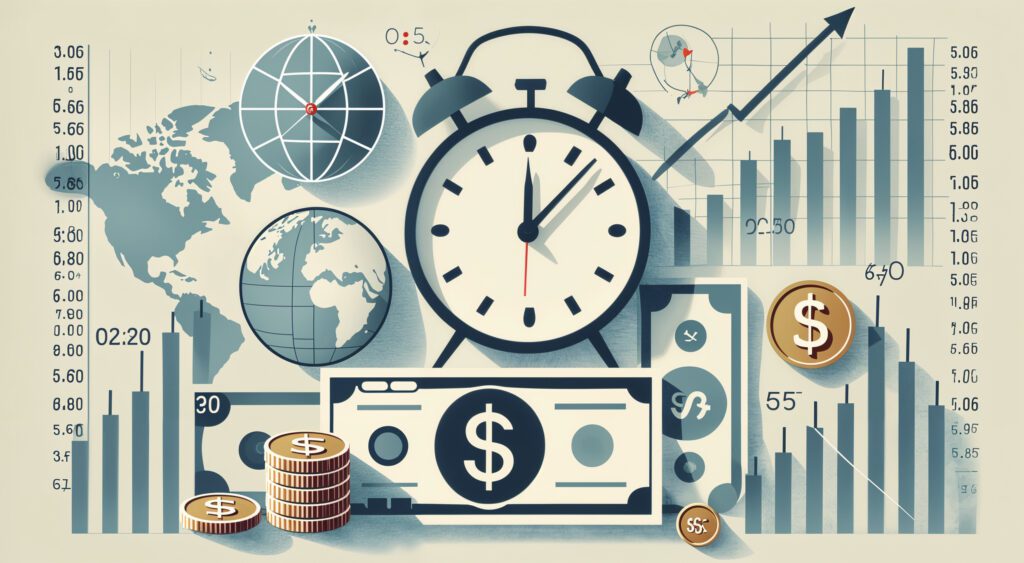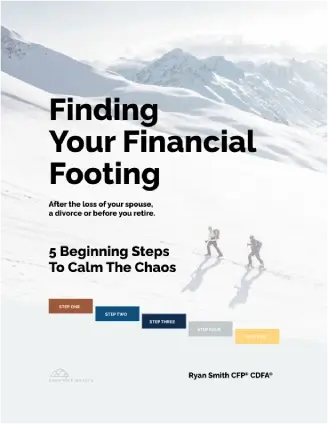There’s been a lot of unsettling news recently – yet again, that’s the news! However, much of it has been aimed specifically at the financial world. Recent events have thrown the market into a volatile tizzy, and just the idea of investing may seem too risky.
But what if risk and volatility are normal?
In this post, we’re going to take a deep dive into market volatility and risk. We’ll review what each is, how they differ, how they’re related, and how you can handle them both as an investor.
What Is Market Volatility?
Market volatility refers to the the temporary movements up and down in the value of investments over any specified period of time. Put another way, it’s a measure of how much prices go up and down. When market volatility is high, it means prices are fluctuating quickly and unpredictably.
There are several ways to measure market volatility. If you’re interested in taking a pulse check on the market as a whole, you can look at something like the Volatility Index (VIX). This index gives you a reading on the degree of volatility based on data provided by the S&P 500, which includes 500 of the largest companies trading on U.S. stock exchanges.
What Is Market Risk?
Market risk relates to the probability of experiencing a PERMANENT loss in the value of your investments. It’s not concerned with potential increases in value. That said, risk comes in many different forms and may not impact every investor the same.
For example, there’s a different risk for someone in their 20s investing in aggressive growth stock mutual funds compared to someone who’s 60 and entering retirement. The younger person is continuing to work and bring in an income and has more time to grow their wealth and recover from a market downturn. Their risk may not be investing enough during this prime time to take advantage of compound interest.
On the other hand, the retiree may face a sequence of returns. Following the same strategy as the younger person could cause their portfolio to dip right as they enter retirement. This risk may be too much because they’re no longer earning an active income and are primarily relying on the interest on their savings to generate a lasting income.
A common way of measuring risk is to use the value-at-risk (VaR) method. A VaR model calculates the potential loss of your investments and the probability of that loss taking place.
That said, meeting with an advisor and understanding the nuances of your situation will give you a much better idea of the risks you’re facing and which ones are worth taking.
Are Volatility and Risk Interrelated in Investing?
Market risk and volatility are terms that are often used interchangeably when talking about investments. However, as mentioned above, the two are distinctly different. Volatility is just looking at the variance of values over time, whereas risk is measuring the potential for permanent loss.
That said, risk and volatility are interrelated. Market volatility can be viewed as an indicator of market risk. That’s because the greater the volatility of an investment the greater the range of potential losses you can incur. In other words, market volatility can signal market risk, but it is not the same as market risk.
Are Volatility and Risk Avoidable When Investing?
Let’s make something clear, there’s always a risk when investing. Inflation is a risk that’s constantly eating away at your purchasing power. If your investments aren’t outpacing inflation, you risk not being able to afford the same quality of life you desire in the future.
Even the purchase of a “guaranteed” bond comes with the risk of not living long enough to see the returns. There’s even the risk of not investing- which can be one of the biggest risks of all!
You’re not looking to avoid risk. You’re looking to avoid unhealthy risk. And since volatility can be an indicator of risk, you’ll also want to avoid unhealthy volatility.
So what’s considered “healthy” risk and volatility? Again, it can vary on a case-by-case basis. It will depend on factors like your investment time horizon and personal retirement goals.
How Can You Deal with Risk and Volatility When Investing?
Both market risk and volatility need to be accounted for when investing. Thankfully, there are a variety of actions you can take to help you continue to build wealth despite these forces. These actions include:
Don’t Invest In Anything You Don’t Understand: Take the time to learn about what you’re putting your money in. Don’t let anyone (that includes us!) convince you to invest in something you don’t understand. A lack of understanding can result in significant losses as you may not be able to make informed decisions about when to buy, hold, or sell.
Diversify Your Portfolio: A diversified portfolio can protect your investments from volatility and risk. You can diversify into markets with less volatility (ex: bond markets) and reduce your risk by not having all your eggs in one investment basket.
Take A Systematic Approach: A systematic approach keeps you consistent even in times of market volatility. It also takes away the temptation to try and “time” the market. With a strategy like dollar-cost averaging into an index fund, you’re able to navigate the highs and lows of the marketplace while simultaneously diversifying your investments to lower your risk. Just make sure you understand how a new investment strategy plays into your full financial picture before powering your portfolio with it.
Have A Long-Term Plan In Place: Focusing only on the short-term is a recipe for emotional volatility and impulsive decision-making. By seeing your investments as a commitment to a long-term plan that’s backed by historical trends, you’ll be much more inclined to ride out the volatility storms.
Take A Media Break: Even the strongest of minds can be worn down with enough toxic media. Incessant doomsday predictions and hot stock announcements have a way of causing their own volatility and risk by getting people to abandon their long-term, systematic approach.
Have A Financial Thinking Partner: Stop being so hard on yourself! Navigating finances is tough. But with an advisor at your side, you have a financial thinking partner. They’ll serve as a support beam in combating the negative impacts market volatility and risk can have on your future.
How Snowpine Wealth Can Help You Invest
At Snowpine Wealth, we understand how unstable investing can seem – especially in times like these. However, we also know how important continuing to work the right financial plan is even when the market seems daunting.
Ryan Smith is a CFP® professional that can help you understand what risks you’re taking and how the market is reacting. He’s also able to help you implement strategies you can use to weather the financial risk and volatility storms as they come.
If you’re ready for the confidence that comes with having a long-term plan in place, please don’t hesitate to reach out. You can reach out to his office at 801-534-4463, or book your complimentary consultation call.
Securities and advisory services offered through Commonwealth Financial Network®, Member FINRA/SIPC, a Registered Investment Advisor. Fixed insurance products and services not offered through Commonwealth Financial Network®.
Diversification does not assure a profit or protect against loss in declining markets, and diversification cannot guarantee that any objective or goal will be achieved.


